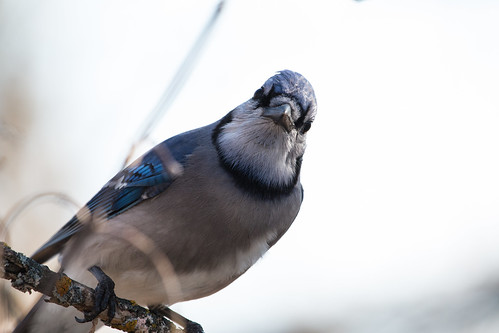For a few years in the 1990s, when I was a bird rehabber specializing on nighthawks and had an education nighthawk named Fred, I was enrolled as a Ph.D. candidate in avian physiology at the University of Minnesota. I was studying nighthawk digestion, and was going to be Gary Duke’s first Ph.D. student whose entire research project would not involve sacrificing even a single bird.
Alas, that was never to be. Life got crazy at home for a while, and then Gary developed early-onset Alzheimer’s. Gary’s illness and death were a huge loss to me personally and to the greater world—he was not only a wonderful human being but also the founder of The Raptor Center and the world’s leading authority on bird digestion. The loss of my own Ph.D. project was minuscule in comparison. Anyway, the world already has one-too-many Dr. Lauras.
But as a student of avian physiology, I learned some things I'd just as soon not discovered. For example, I've long known that in baby birds, the body is about 12 percent blood while adult bodies are only about 6 percent blood. The amount of blood in an animal is a critical factor when calculating just how much of a particular medication to administer, so this basic fact is important. But I was nonetheless taken aback to learn just how scientists determined it. There's a fancy name for the process: exsanguination, which literally means letting the blood out, through a needle inserted into a blood vessel. This is done while the bird is still alive, with a working heart to cooperatively pump away as the vital fluid leaks into the researcher's container.
Oddly, birds never go into shock even after losing huge quantities of blood, and they survive blood loss much better than mammals do, apparently because they efficiently detect blood loss and constrict their blood vessels to maintain blood pressure. A duck can withstand the rapid loss of 12 percent of its total blood volume with only a slight drop in blood pressure, and if, after a few days, it is bled again, it can lose an even greater quantity before its pressure drops to that same level. One researcher learned that rats, cats, and dogs could lose only half as much of their blood volume as pheasants, crows, hens, ducks, or pigeons before dying. When I saw the graph showing the results of the study, all I could do was wonder how anyone could sit by passively as the life literally drained out of these animals. Was that little fragment of knowledge really worth the cost of learning it?
Fortunately, much of this basic research was done long ago, though the study about how much blood loss led to fatality was just done in 1969, the year I started college. Some animal research not only increases our knowledge to help our own species but also provides information that improves the lives and health of our pets and wild creatures treated by veterinarians or rehabilitators. Outright cruelty makes all but a few researchers uncomfortable, and many refuse to consider experiments that are unjustifiable or only remotely justifiable. But some arrogantly consider any question that they can think up worth getting an answer to at any cost.
Science and government working together have sent humans to the moon and eradicated smallpox. But they’ve also done incalculable harm. Radiation research on humans devised by American scientists and governmental authorities was no more justifiable than Nazi medical experimentation on human subjects—somehow bleeding a chicken seems pretty mild in comparison to either. Science—that is, using our mind to ask questions and devise ways of learning the answers—is what brings about giant steps for mankind. But only the heart can tell us whether each of those giant steps will carry us forward or backward.

